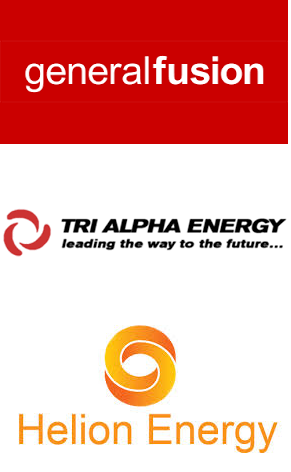I have believed for many years that nuclear fusion would ultimately be a better, safer form of energy generation than nuclear fission. Most of the energy in the universe is generated by stellar fusion reactions that fuses hydrogen into helium. Nuclear fusion power reactors are intended to harvest the enormous energy released from the fusion of lighter elements into heavier elements. Unfortunately, it has proven to be extremely difficult to produce the conditions required for nuclear fusion in a reactor on Earth. For a long time, there was a joke about nuclear fusion always being forty years in the future. Now, however, the timeline has dropped and nuclear fusion may be only ten years in the future. There are currently at least six companies working on designs for small nuclear fusion reactors in the U.S. and Canada. I have discussed this research in previous blogs. The prospect are bright enough to attract private billionaire investors.
Jeff Bezos, the founder of Amazon.com has invested in General Fusion, a British Columbia startup. GF has received twenty million in funding from the Canadian government and seventy four million from venture capitalists. GF utilizes a spinning sphere of liquid metal which develops a cavity in the center which holds hydrogen plasma. The sphere is surrounded by pneumatic pistons which slam into anvil pistons that form the sphere containing the liquid metal. The shock wave collapses the metal into the cavity and generates a fusion reaction. Energy released as fast neutrons is captured by a heat exchanger that drives a steam turbine. They intend to start building a full scale prototype 100 megawatt system in 2017.
Paul Allen, co-founder of Microsoft is investing in Tri Alpha Energy in Foothill Ranch, California near Los Angles. TAE has raised over two hundred million dollars. The Rockefeller family is also an investor. TAE is approaching nuclear fusion uses colliding beams of ions inside a truck sized cylindrical vacuum chamber lined with solenoids which create a magnetic field. The combination heats a plasma and creates a fusion reaction. Ions propelled by the fusion reactions are circulated past electrodes to generate power. TAE is working on a one hundred megawatt power generator prototype.
Paul Thiel, co-founder of PayPal has invested in Helion Energy based in Seattle, Washington. Helion has received a total of four million dollars from the U.S. government which has thirty million dollars allocated for nuclear fusion research. Helion's approach is to apply powerful magnetic fields to compress and heat a hydrogen plasma once a second. Their reactor recovers electricity directly from the rebound of the magnetic fields and does not require additional equipment like a steam turbine to generate energy for the power grid. Helion will need two hundred million in funding to construct the commercial pilot plant. They hope to be able to start building commercial systems that generate fifty megawatts in 2022. One of Helion's goals is to make power reactors for the developing world.
If any of these companies can actually build a competitive power generator based on nuclear fusion in the near future, we might be able to achieve a significant reduction in carbon emission to reduce the impact of climate change.
